There are innumerable Iceland volcanic and geothermal areas to explore when visiting the Land of Fire and Ice. Iceland is rather young geologically at 33 million years old and still has major volcanic activity on a regular basis. The island has 33 active volcanoes and is a geothermal paradise. There is zero water treating or rationing and the tap water, the equivalent of pure natural spring water, is the cleanest in the world. Often, on our hikes, we would refill our water containers with spring or river water.

Iceland is a remarkable combination of natural abundance and wastelands. The entirety of Iceland is self-sustaining given the vastness of energy resources bubbling just beneath, and sometimes on top, of the island’s surface. Energy is always in ample supply and relatively cheap to maintain. In addition to the natural geothermal thermal heating the abundance of water, much of it from Iceland’s waterfalls, resulting in 75% of Iceland’s power coming from hydroelectric power. From a visitors perspective the resulting Iceland volcanic and geothermal areas provide an utterly unique assault on all 5 of your senses.
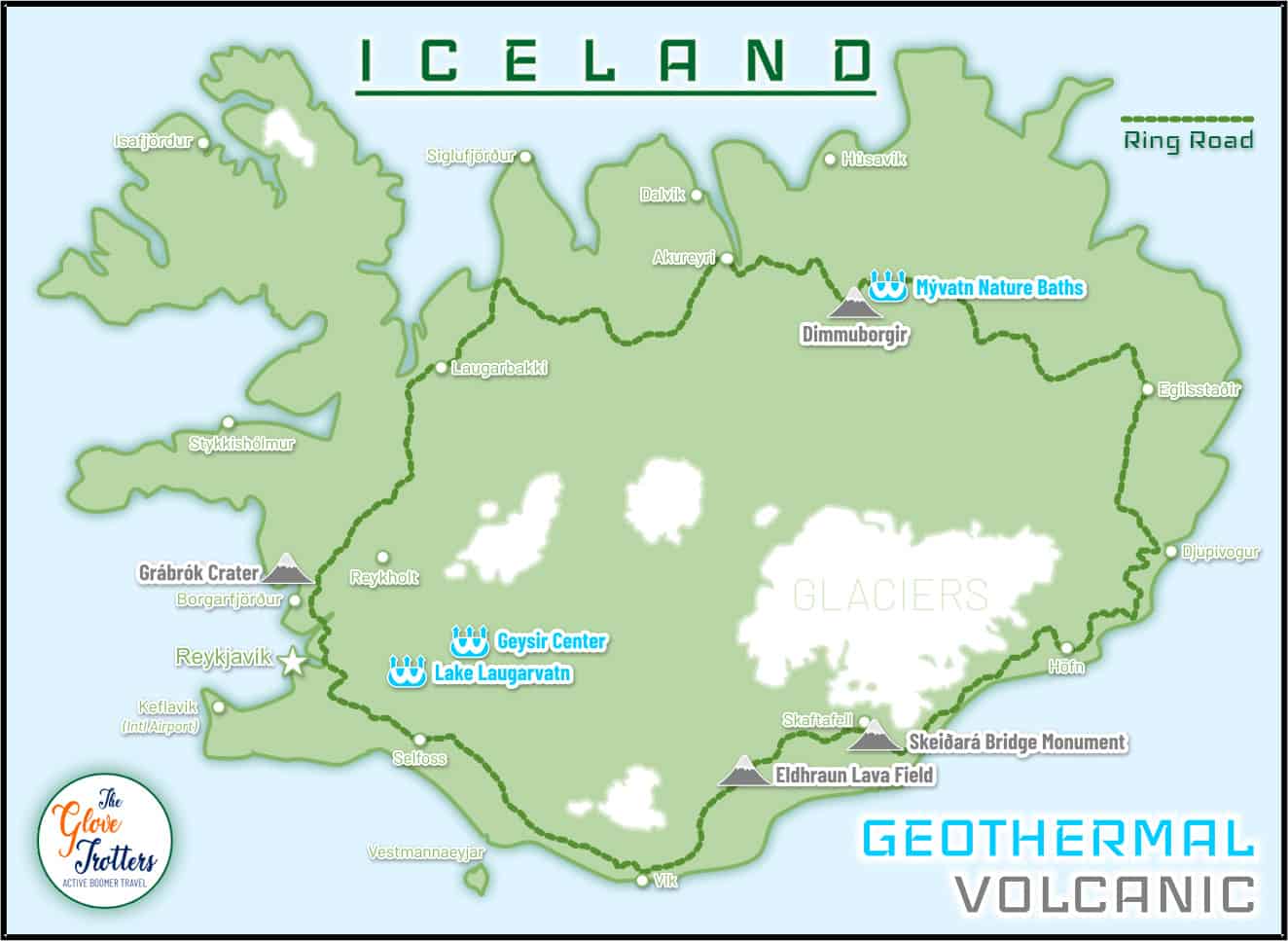
Jump to a specific area.
Lake Laugarvatn
Pronounced: law • gur • vaten
Inside the Golden Circle you’ll find Lake Laugarvatn, one of the more subtle Iceland geothermal and volcanic areas to explore. This small, shallow lake is an ideal example of the magic of geothermal and the hot springs it produces. Along the edge of the lake the water is so hot it actually boils. No fish can survive this temperature yet just 100’ (30 m) out from the shore is some of southern Iceland’s best angling for char and lake trout. There are three separate hot springs at Laugarvatn including the Fontana Spa but the real thrill is the ability to walk into the lake itself at all times of the year. In fact, Laugarvatn means a “lake for bathing.”
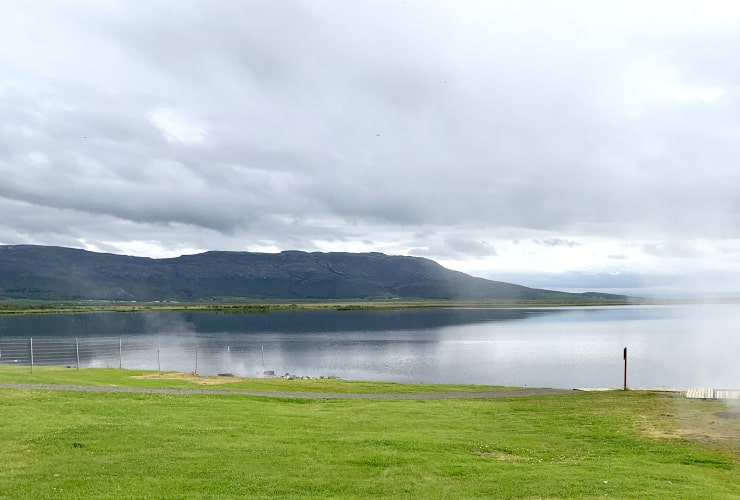
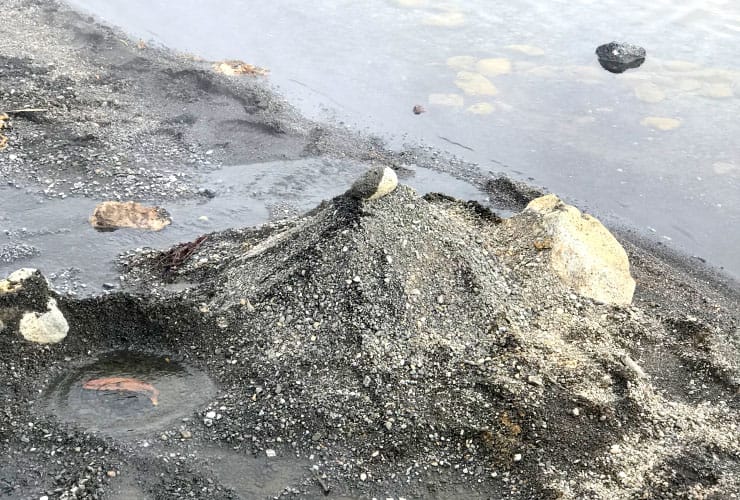
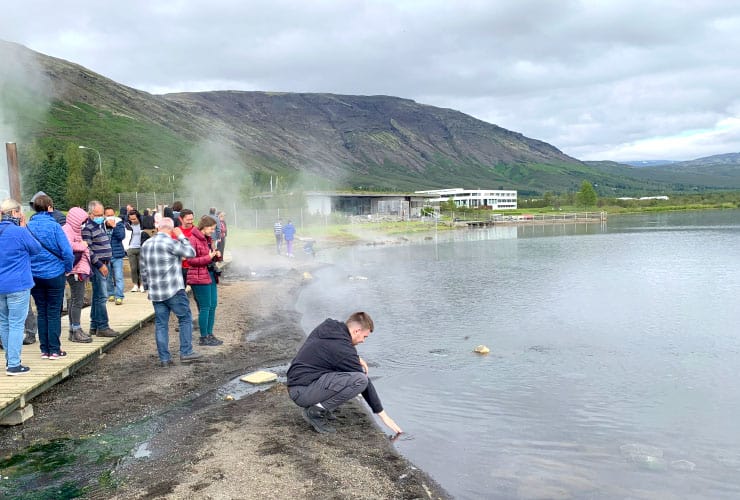
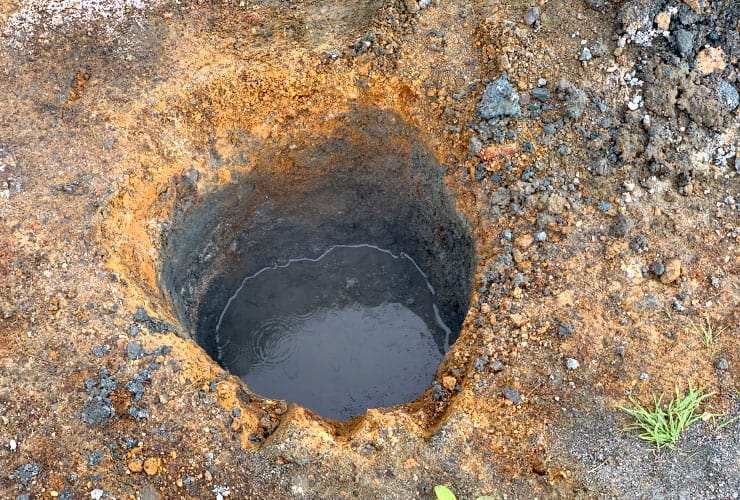
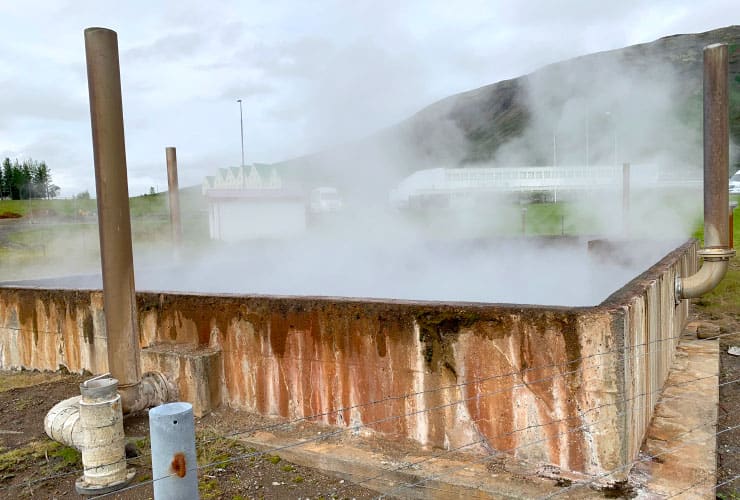
The water is quite warm to the touch and is filled with algae. The ground beneath the beach is so warm the locals use it as a natural oven for baking Icelandic rye bread, or rúgbrauð. They dig a hole in the ground, place the dough in a small metal pot and cover with enough dirt to create a mound. 24 hours later the bread is cooked and extremely delicious. There are numerous mounds along the beach but active ovens are designated by the placing of a unique rock on the top. The one drawback to the thermal pools is the smell of sulfur that is more prevalent ans the water’s temperature increases.
Geysir Center
Pronounced: guy • zur
Iceland’s Geysir Center is home to multiple active geysers, bubbling mud pits and a truly fantastic shopping/food court emporium. Aside from Yellowstone’s Old Faithful, Iceland’s “Great Geysir” is the world’s most renowned natural geyser. Unfortunately it only produces about once a year now due to human interference. Known to exist as far back as the 13th century, Great Geysir was known to reach heights of 558’ (170 m) on a regular basis. However, in the 20th century, local authorities wanted the geyser to be more predictable for tourists and started adding, among other things, soap in an attempt to control eruptions. They predictably succeeded in plugging up Great Geysir completely and only an earthquake in 2000 allowed it to become active again, albeit only once a year.
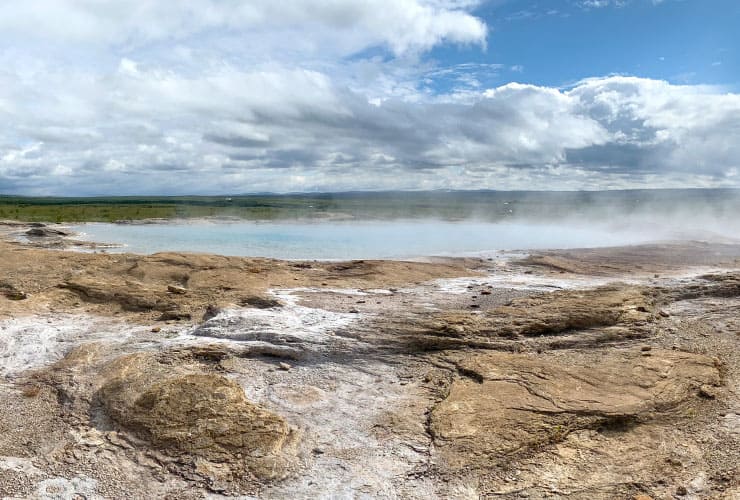
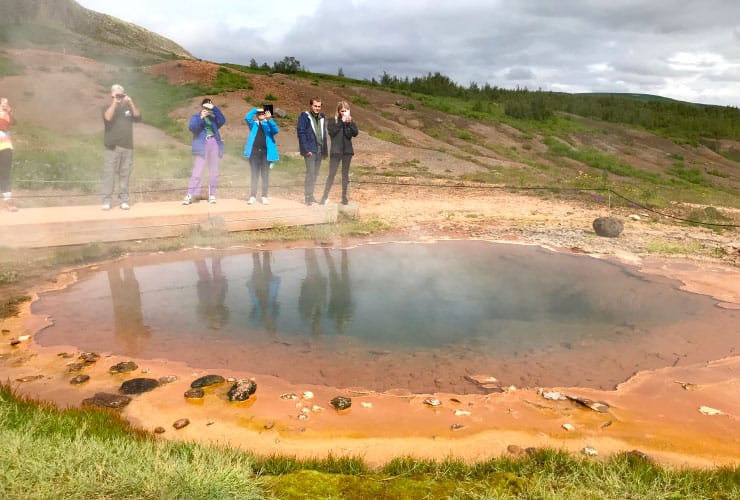
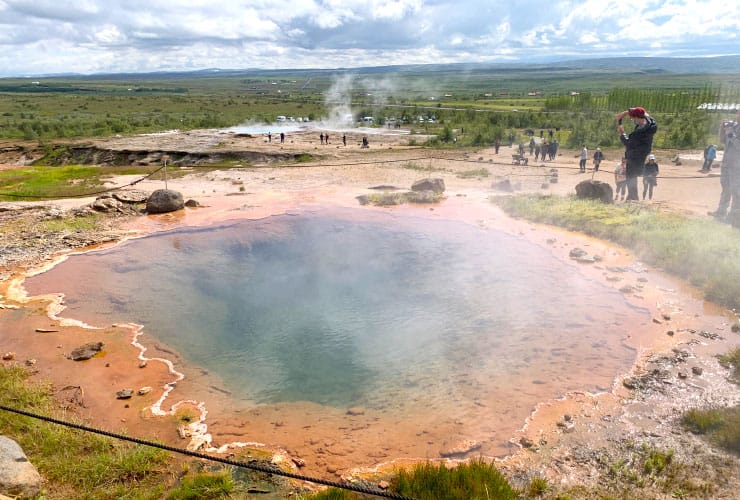
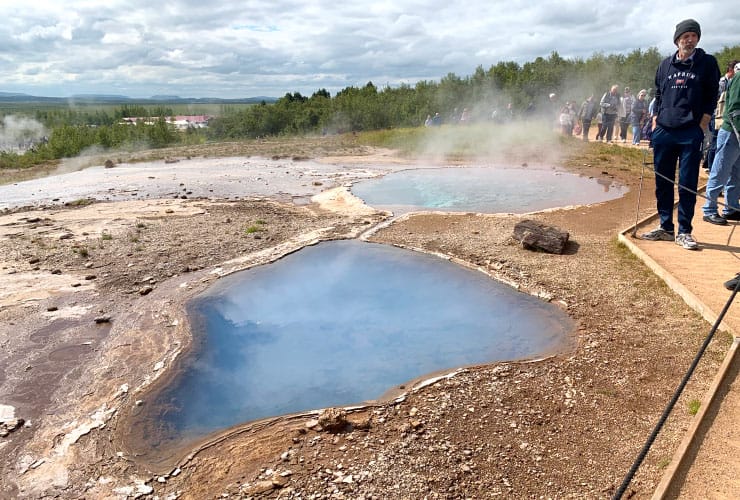
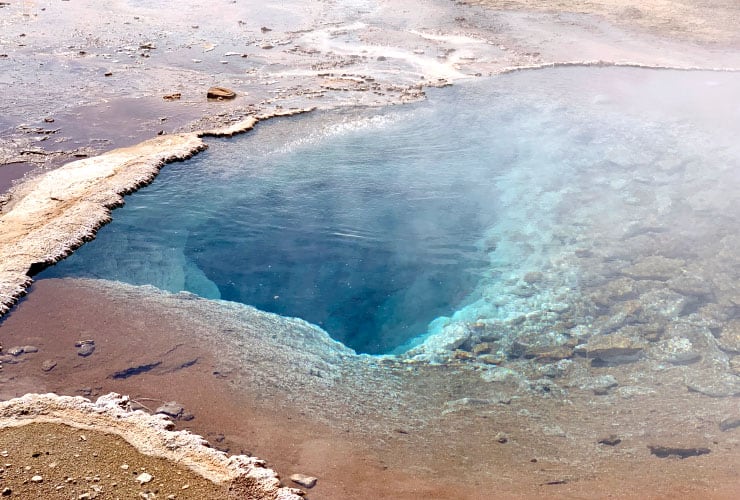
The Great Geysir is still worth visiting just for its impressive size and coloration. Just above the Great Geysir is Konungshver which not only is a beautiful combination of shape and color but also allows a wider view of the larger geyser below. Another favorite area is Blesi which rests just above Strokkur. Blesi has 2 distinct pools that are very clear allowing you to see the intricate patterns of rock created by the extreme heat being produced underground.
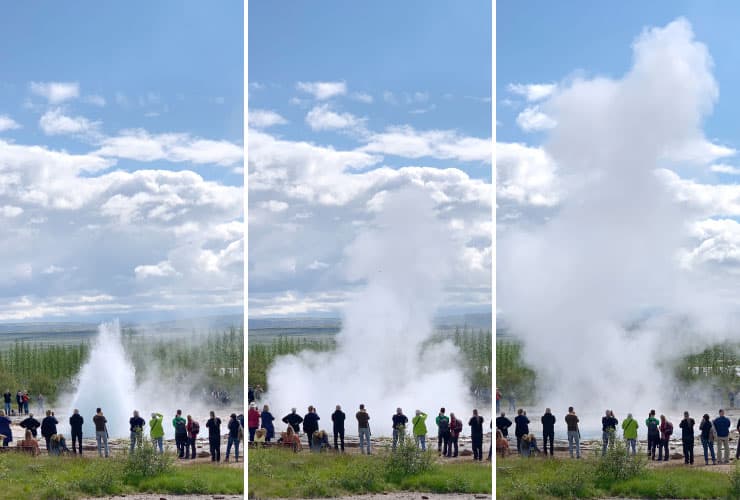
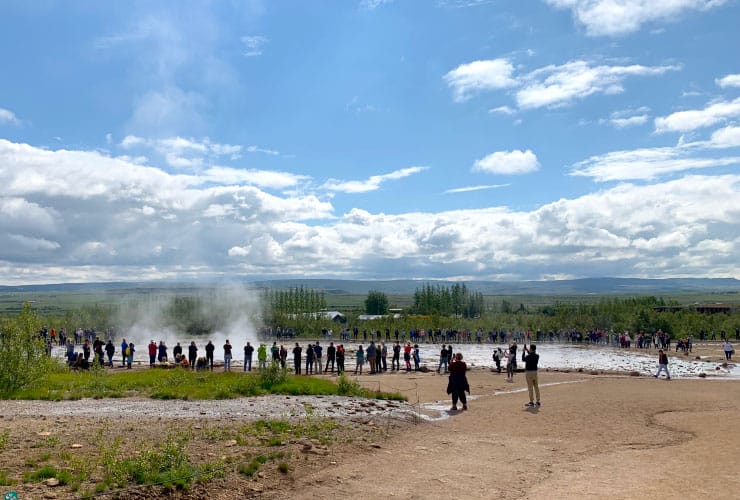
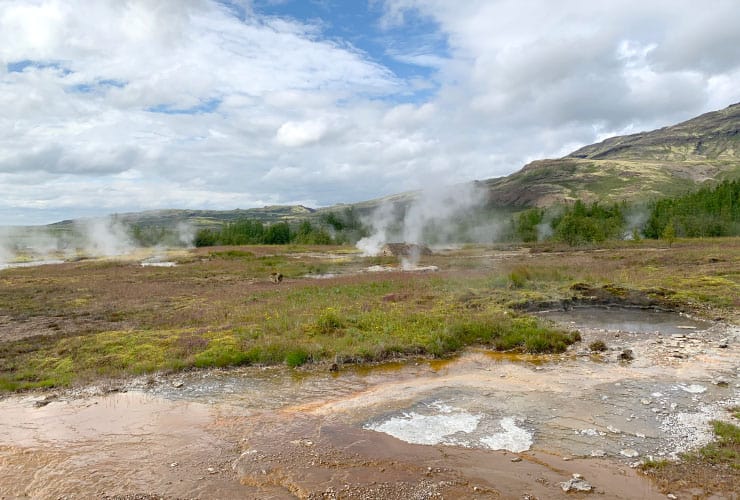
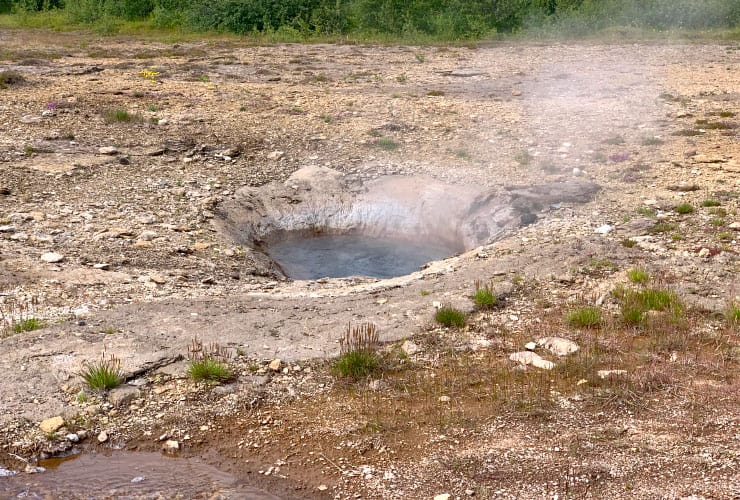
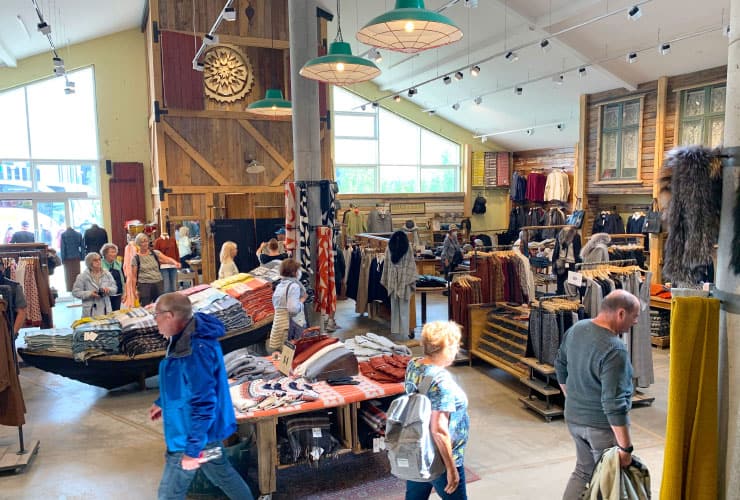
The main attraction is definitely Strokkur. Expect crowds of people surrounding this most active of geysers. Strokkur erupts about every 7-10 minutes so it attracts the biggest crowds. There are basically two different eruptions, one that blows around 130’ (40 m) and another more modest 50’ (15 m). Unfortunately there is no prior indication of eruption so be patient . . . the reward is well worth your patience. The main path, an easy and comfortable walk, will take you around to every geyser and mud pit. Because you can get so close to each geyser, the Geysir Center is one of the more engaging Iceland geothermal and volcanic areas. Be sure to visit the main center shopping which has a bit of everything.
Mývatn Nature Baths
Pronounced: may • vat • en
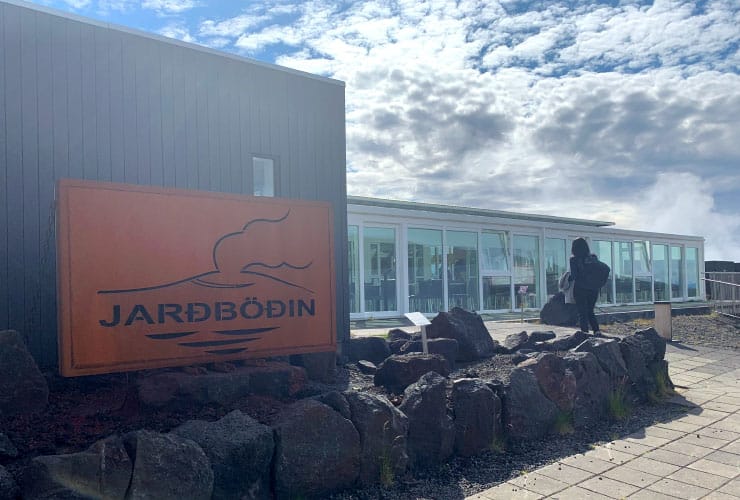
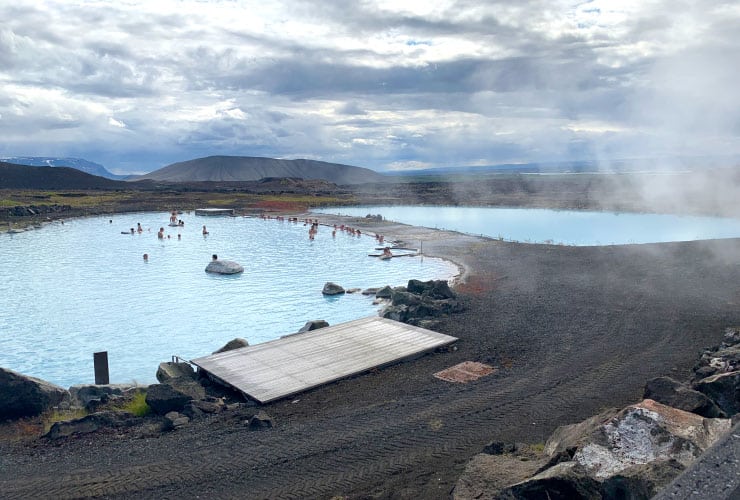
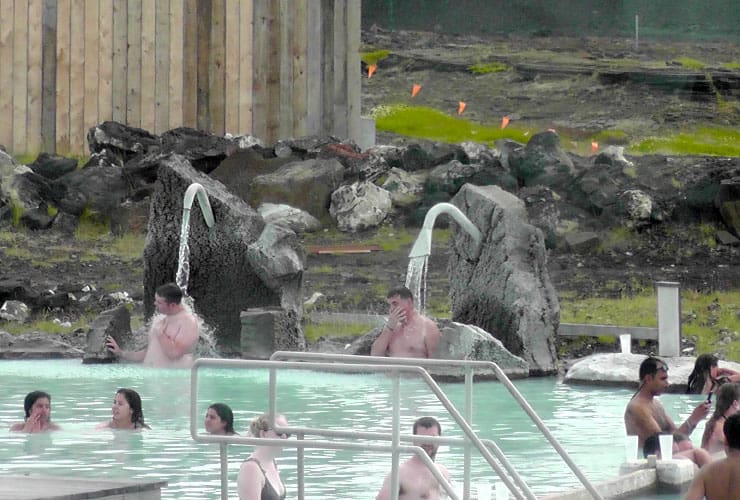
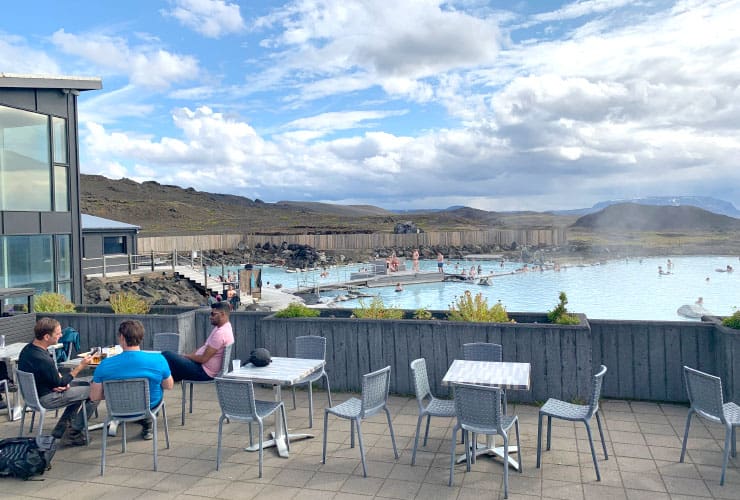
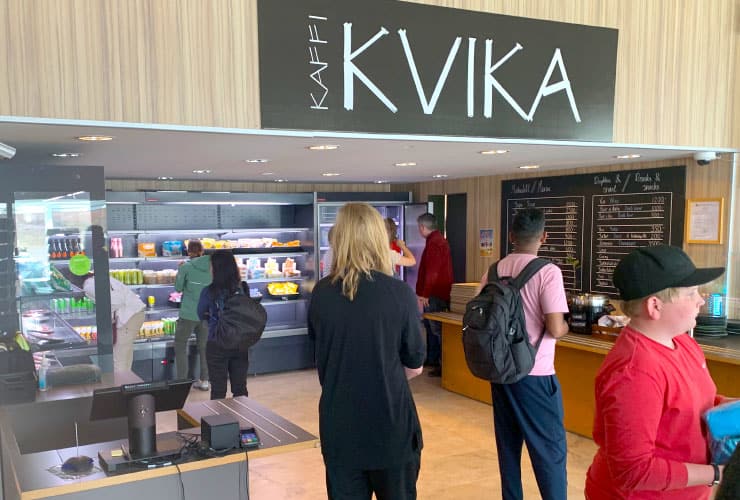
One of the more popular tourist spots in Iceland is the Mývatn Nature Baths also known as Jardbodin vid Myvatn. Though Mývatn itself is man-made it draws from a surrounding lagoon filled with sulphur, silica and other minerals with healing and soothing qualities. There is a main area, hot tub, kids section and two steam baths to choose from. The water temperature for adults is maintained around 97-104°F (36-40°C) and most visitors stay around 90 minutes. There is also an area to purchase food and drink that’s mostly light meals and snacks. A visit to the Mývatn Nature Baths isn’t cheap but certainly a well deserved respite after so many of Iceland’s physically challenging activities. Its a worthy addition to any list of favorite Iceland geothermal and volcanic areas.
Eldhraun Lava Field
Pronounced: el • due • ron
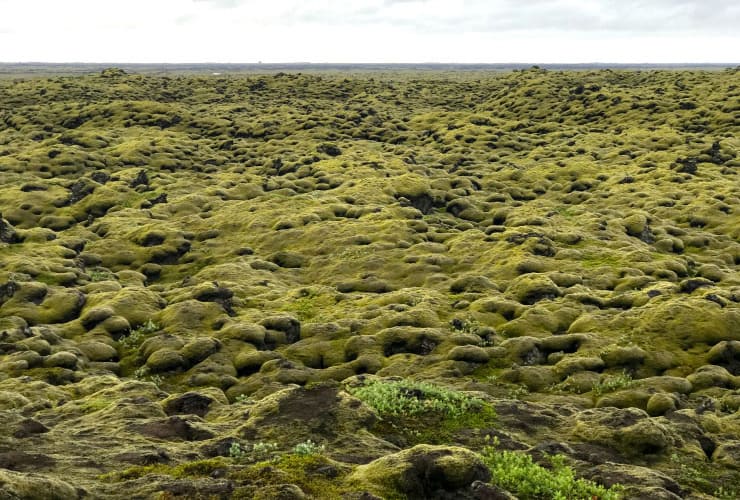
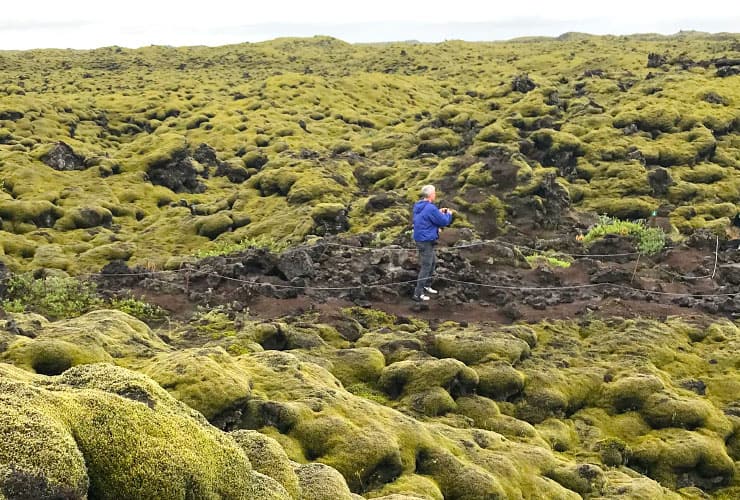
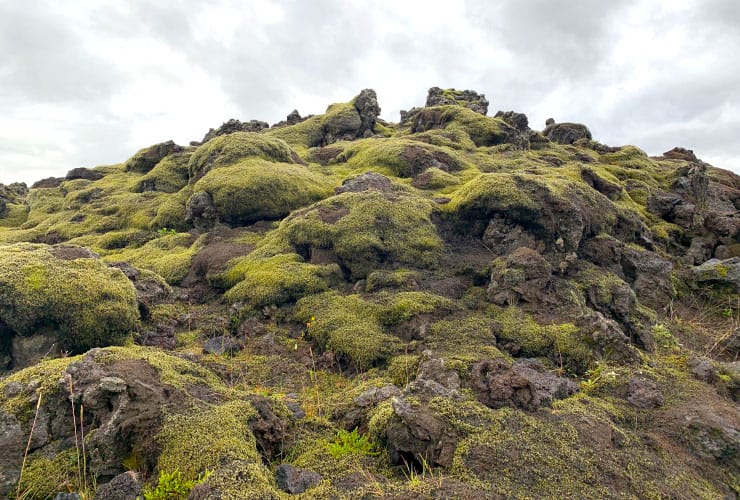
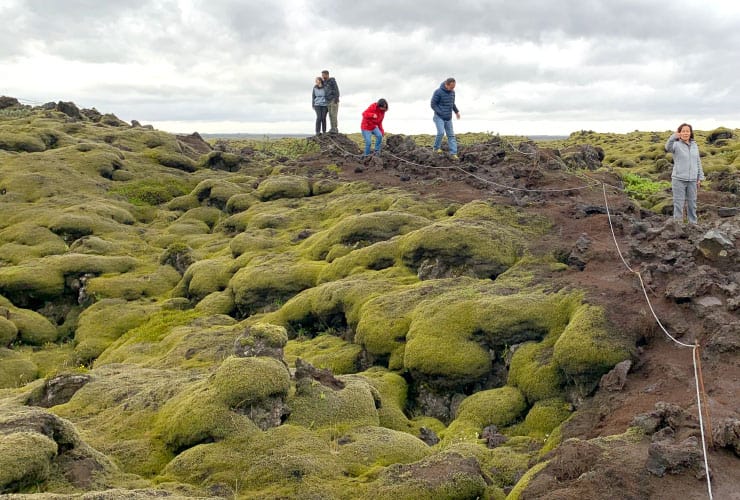
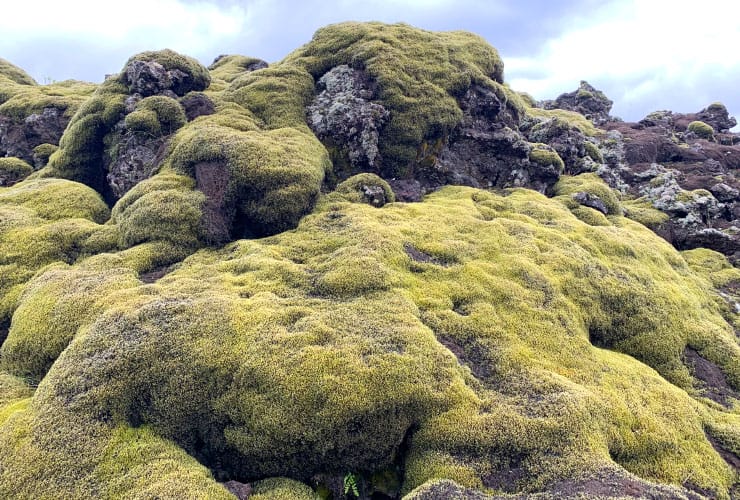
In 1783 a series of volcanic eruptions in Iceland (named Skaftáreldar), lasting 9 months, produced crop failures for 3 consecutive years across Europe and the Americas, killed over 2,000,000 people and eventually led to the French Revolution. In Iceland the lava covered 218 mi² (565 km²), killed a quarter of the population, two-thirds of the livestock and created fissures up to 1.55 miles (2.5 km). It destroyed everything in its path and has resulted in Eldhraun (Fire Lava), the largest lava field in the world. Skaftareldahraun allows you to get up close and personal with the spongy moss remains of that field today. Because of the delicate nature of the moss covered rocks, it is illegal to damage moss in Iceland thus allowing these fields to take their natural course of converting, eventually, into farmable soil. The rolling fields are utterly unique and a fascinating addition to our list of Iceland geothermal and volcanic areas.
Skeiðará Bridge Monument
Pronounced: sky • dar • rah
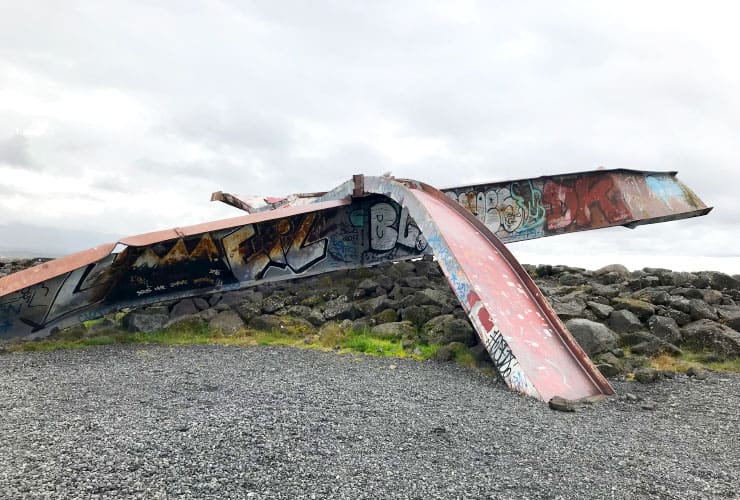
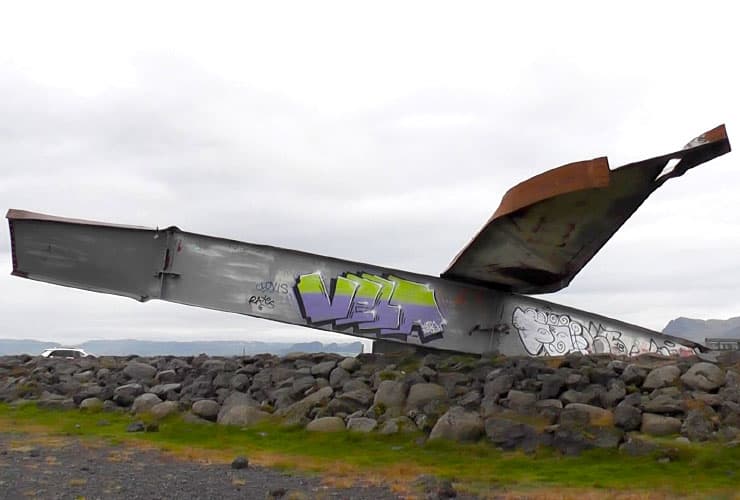
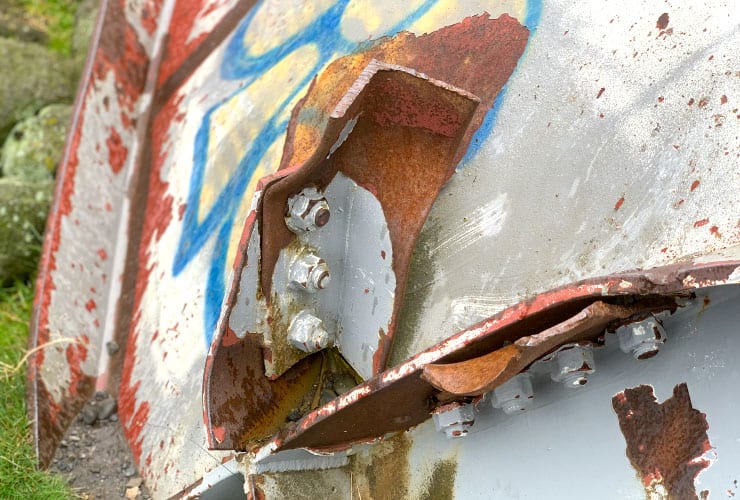
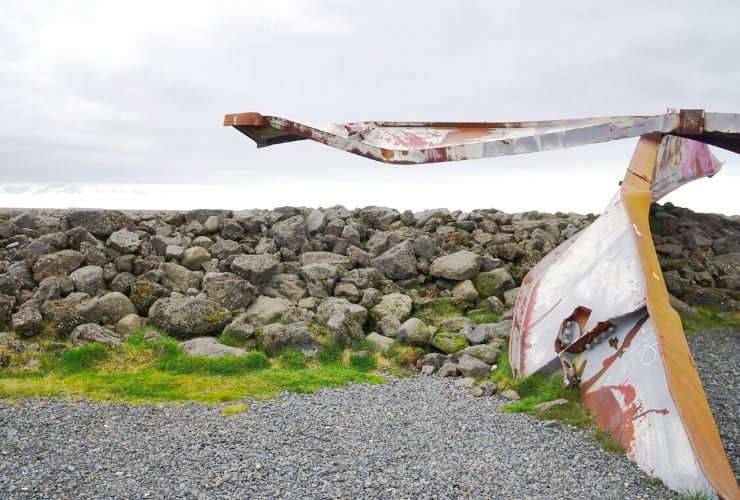
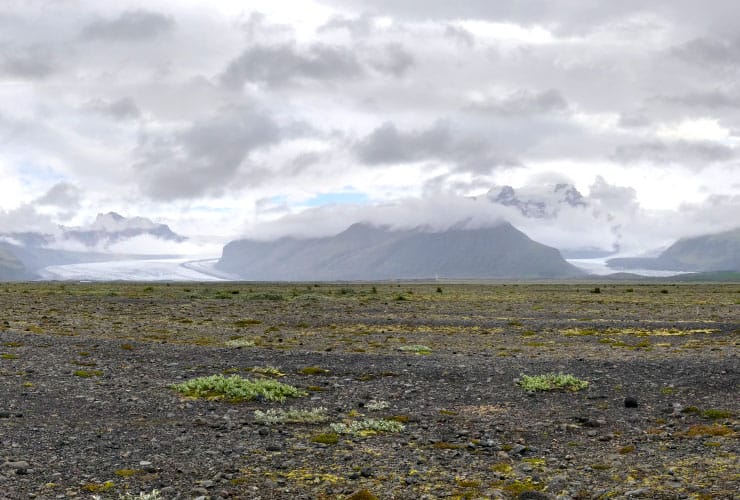
Directly off the Ring Road in Svínafell is the remnants of the Skeiðará Bridge and one of the reminders of how destructive some Iceland geothermal and volcanic areas really are. In 1996 the volcano Vatnajökull erupted. The heat from the lava melted Skeiðarárjökull, the glacier that lies atop the volcano. These created a massive flood that, in addition to the rush of water, carried with it huge chunks of ice. These so-called glacial shards made mincemeat of the bridge and only a few metal scraps remain. They’ve since been tagged by local “artists” but remain as a testament of the destructive power of Mother nature. From the monument you get a spectacular view of both the Skeiðarárjökull and Svinafellsjökull glaciers, the latter of which we explored for a few hours.
Dimmuborgir
Pronounced: dim • me • boar • der
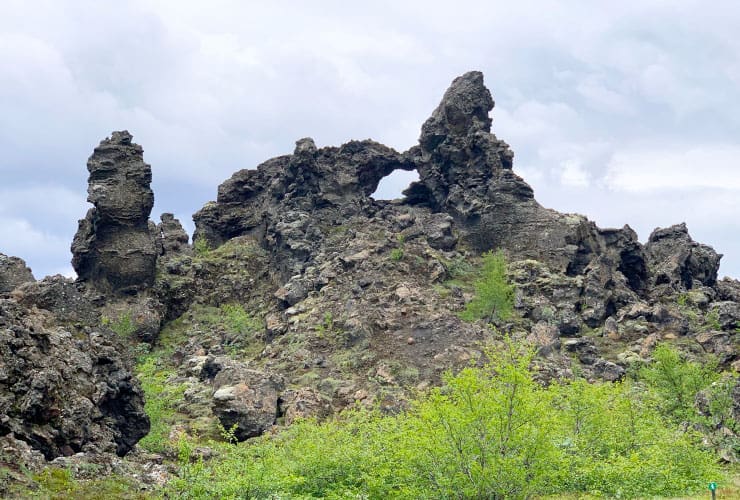
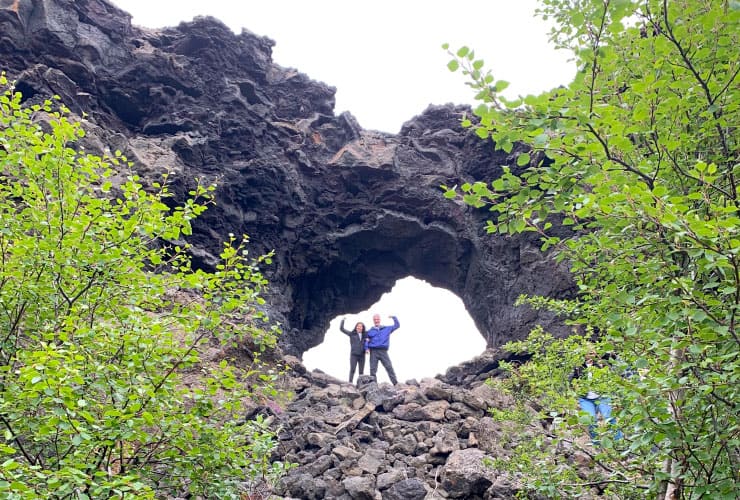
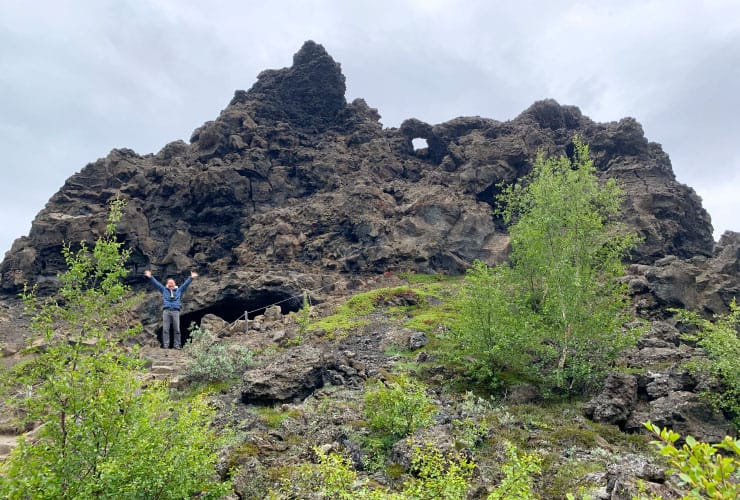
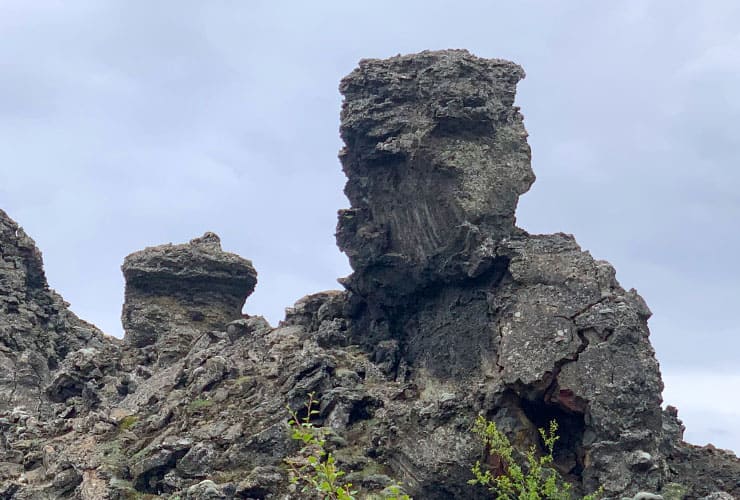
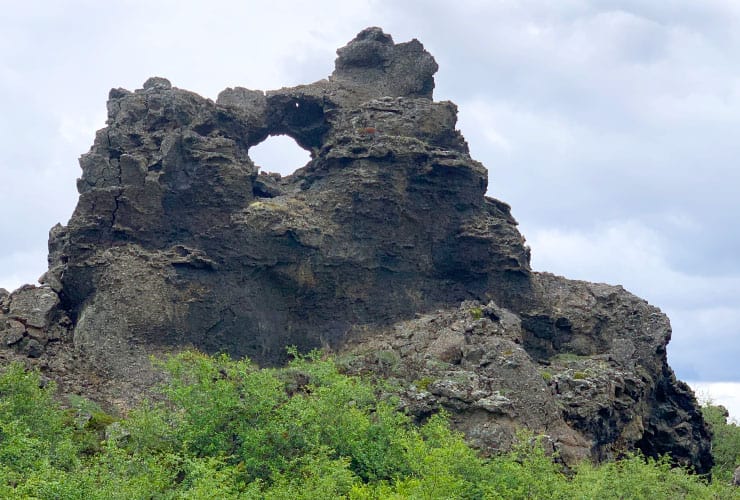
If you enjoy intricate rock formations then add Dimmuborgir to your list of favorite Iceland geothermal and volcanic areas to visit. Also known as the Black Forest and Dark Cities, it was created from a volcanic eruption over 2,000 years ago. The lava passed over a lake causing it to boil and solidify in huge piles of rocks, caves and caverns shaped primarily from the resulting boiling water bubbles. The result are amazingly intricate jagged rock formations that rise up like incomplete walls in a narrow hallway. Dimmuborgir is also home to many trolls in Icelandic legend as well as the Yule Lads, Iceland’s somewhat demented answer to Santa Claus. In popular culture Dimmuborgir has been featured in Game of Thrones and Dimmu Borgir, a Norwegian black metal band, has taken on the name in honor of this most unique of Iceland geothermal and volcanic areas.
Grábrók Crater
Pronounced: growl • brook
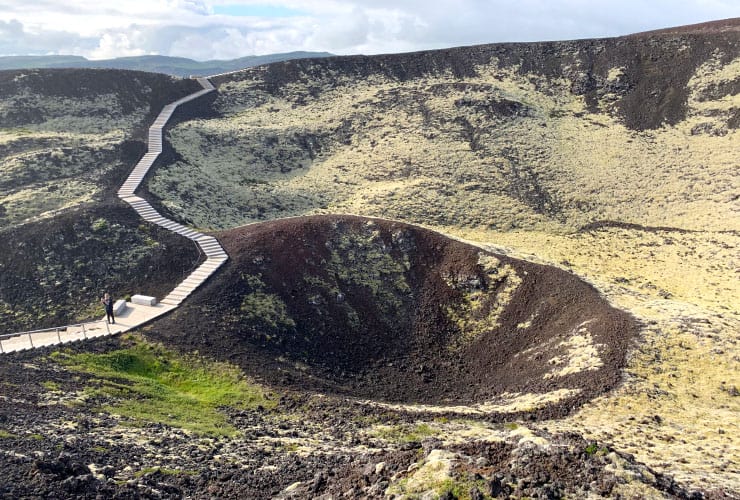
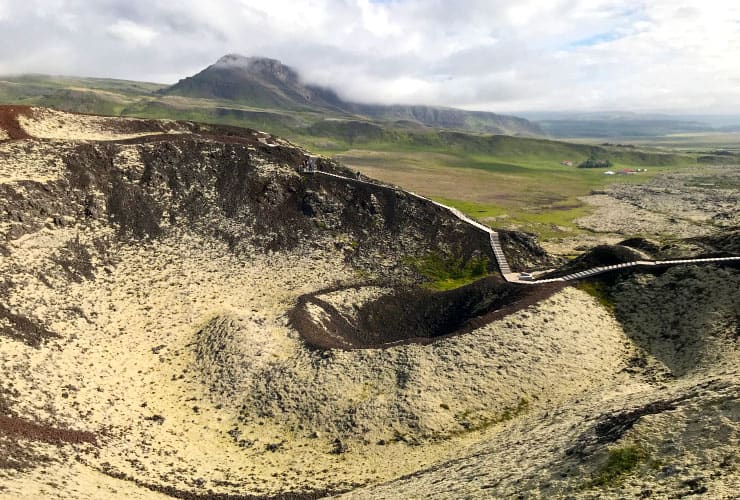
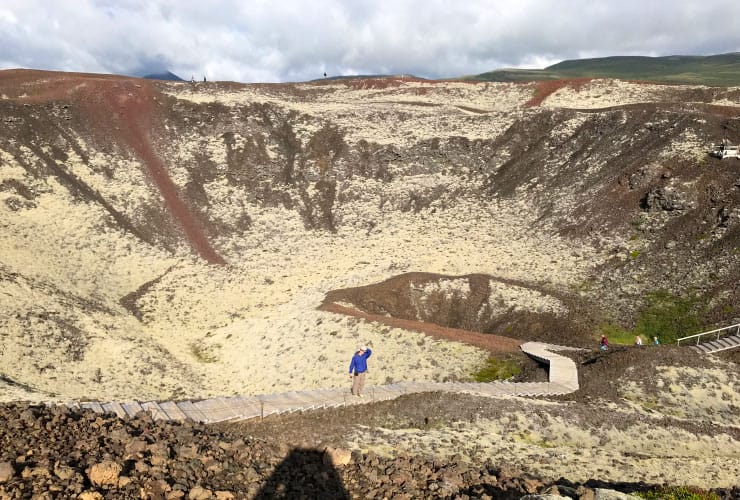
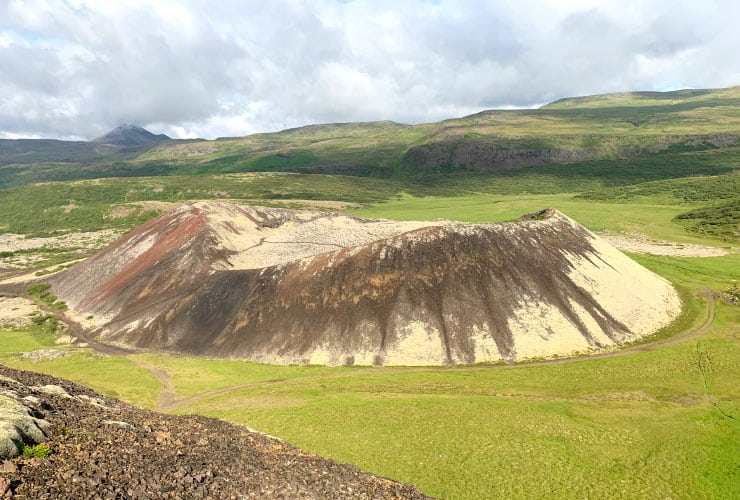
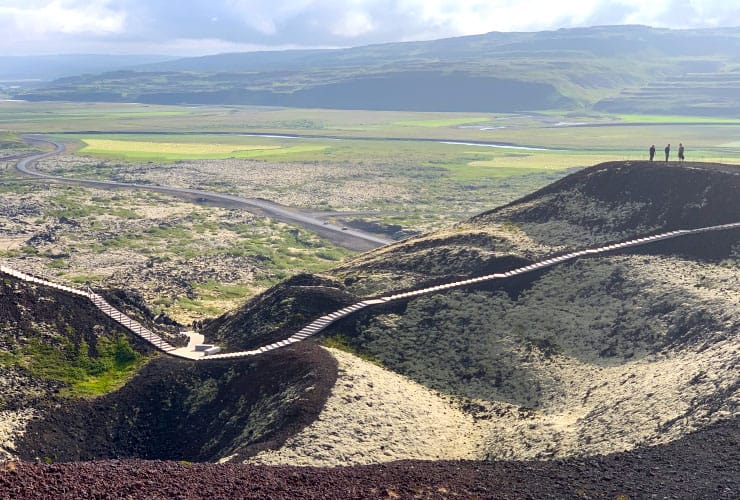
Part of the Ljosufjoll volcanic system, the Grábrók Crater is one of three protected Grábrókargígar craters located in Norðurárdular along western Iceland. Rising 558’ (170 m) above the ground, this fissure eruption (lava coming from the ground instead of a cone or vent) occurred over 3,400 years ago. It’s pretty easy to ascend to the top of, and walk all the way around, the crater with wooden steps and paths easing your journey. This allows you to get a look not only down into the crater but also the surrounding mossy lava fields of the Norðurárdular Valley and the Grábrókarfell crater to the west.

As you can see there is much variety in the Iceland geothermal and volcanic areas for visiting. Because the island is basically a tinderbox of volcanic activity (and always has been) you witness geological phenomenon not seen anywhere else in the world. Where there is beauty like Goðafoss and Hraunfossar there are also constant reminders of how destructive nature can be.
Do you have a favorite place to visit in Iceland? We’d love to hear all about your travels!

